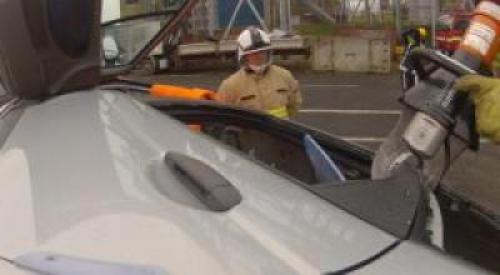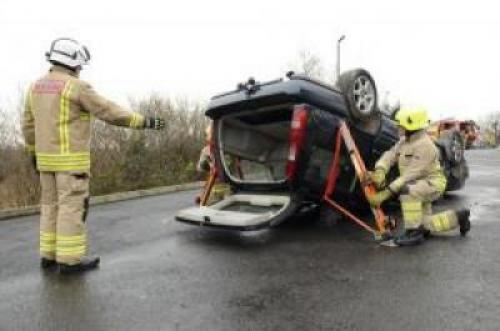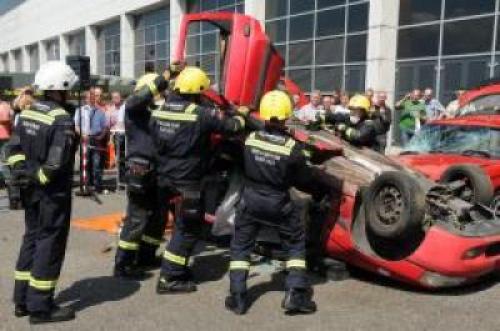Incident Command
I was recently asked to write a blog on managing the scene of an extrication, well here goes! A well-disciplined and experienced incident commander (OIC) will make the process look effortless, ensuring a safe and timely extrication by his/her team. Of course knowledge and experience is not gained over night; so what are the elements that go to make up effective command and control on scene?
There is no magic formula but let’s look at a few basic principles.
Safety
So much of the role that the OIC performs is down to the understanding that safety on scene is always the priority and this should be instilled in the team during all training sessions whether they are theoretical or practical. On scene, no work can begin until the OIC has identified all the hazards on scene and communicated this information to the crew. The most effective way to do this is to complete a 360 degree survey of the scene.
For the duration of the rescue the OIC must ensure that all persons on scene operate safely, wearing full personal protection equipment and adopting the correct position when using hydraulic rescue tools.
Positioning
The need to maintain safety throughout the rescue should dictate the positioning of the OIC. A perfect distance is about 2-3 metres from the vehicle allowing a clear view of the full working area. It is sometimes tempting to get closer but this must be resisted; being positioned too close to the vehicle means that you cannot see the full risk area. The only exception to this rule is when there is an issue requiring immediate attention, where safety is compromised or when there is a need for the OIC to get their hands on the casualty during the extrication process (for this reason the OIC should also wear medical gloves under their normal extrication gloves).
Ideally the OIC should position themselves so they can see every cut/spread/ram.

Planning and Communication
The extrication scene is a very dynamic place and the OIC must gather a lot of information in a very short amount of time so that an extrication plan can be devised. Information (from the medic) such as the condition of the casualty and their level of entrapment is necessary before this plan can be conceived. This information has to be communicated to the rest of the team and how this is achieved is critical. The need to maintain communication throughout will also ensure that the OIC’s position is maintained. Regular updates from the medic and the technical team will inform the OIC of how the plan is developing, and allow quick adaptation to any unforeseen problems.
Of course communication with other agencies (paramedic/police) is an integral part of a successful rescue, but this must not compromise effective command and control of the scene. The OIC should consider nominating a deputy (where personnel permit) to deal with other agencies.
Providing Motivation and Momentum to Achieve Progression
Momentum is extremely important and the OIC has a crucial role to play here. Minimum time on scene means that your casualty can receive definitive medical care at the earliest possible time. Simply by motivating the team, the OIC will ensure that the team maintains momentum.
Minimum on Scene Coaching/Teaching & Technique Management
Your training regime should illuminate virtually all on scene coaching/teaching by the OIC. The ability to immediately react to the simplest and most concise instruction means that the team can work more efficiently. For example, if the OIC asks for the side to be taken out of the vehicle (removal of doors and B pillar) then the team should already know their preferred option, without the need for the OIC fully describing how the technique should be performed.
Handing Over Command and Control
The OIC is ultimately responsible for the rescue process; however there comes a point where he/she should relinquish an element of control. When the final extrication space has been established and the casualty is ready to be extricated, the medic must take over and control this phase of the rescue. This is simply because they are in the optimal position to take charge. They have a full understanding of the casualty’s condition and are usually performing some kind of manual stabilisation (e.g. cervical spine management).
Debrief
The information discussed in an operational debrief is extremely valuable and both positive and negative points should be considered. Rescuers must always try and advance their learning and understanding of what they do and this process should assist with future training events and operational incidents.
A debrief is also a time where OIC’s can ensure the wellbeing and welfare of their team. We must never forget that extrication can be a very stressful event, even for experienced rescuers. The importance of knowing your team on an emotional level is extremely important, especially at times like this, and the welfare of crew members is something an OIC needs to consider long after they have left the scene of an incident.
Conclusion
Command and control of extrication is not easy. It requires discipline and confidence which only comes from experience. How you gain such experience is crucial and should be a mixture of operational incidents and realistic training, both theoretical and practical. The safety of your crew must be your priority as this will form the majority of your actions on scene, both in terms of decision making and positioning. The ability to absorb information, process it and then deliver a fully viable extrication plan to your crew is a very difficult skill: Not only does it take immense communication skills and operational competence, but also a high degree of emotional intelligence. A good OIC should expect to be challenged on scene and a knowledgeable and competent crew should be able to do this, if they believe there is a viable alternative to the original plan.
An OIC has to be a motivator and be able to produce the best from his/her team without the need for extensive coaching on scene. Finally, the OIC must be able to reflect upon the work that has been carried out. A debrief in a group situation should provide structured quality feedback that will allow the future development of skills, whilst at the same time rewarding hard work and endeavour.
As always I welcome your comments!
Ian Dunbar

